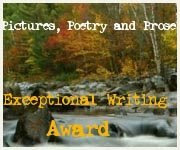
As time progresses the way I'm using my blog is evolving.
Last year and the year before, when I started to blog in earnest, I found that I was often making shorter blog posts, as I discovered interesting ideas or technology that I thought might be useful.
Then I discovered Twitter and most of those timely posts have moved there, where I can share and discover the findings of others.
So, where does that leave my blog? For now, it's become the place where I like to write and think synoptically - pulling together patterns that appear before me as I work and research in the e-learning sphere.
This was brought home to me over the last week, as I started my next module for my MA in Online and Distance Education at the Open University. My new course,
H809, is called Practice-based Research in Educational Technology. The first reading, dating back into the dark ages of 1989, is all about statistics and the reliability of hypotheses and data.
In brief, the article looks at the early developments in e-learning (or Computer Mediated Communication) and the degree to which asynchronous online communication made learning better or worse for students.
The problem the researchers had was that they developed over 50 hypotheses and the sample groups they used weren't large enough, or clearly defined enough, to make the resulting data produce results that were meaningful. Consequently, the language in the report hedges its bets with 'ifs', 'on the one hand', and other similar expressions, to gloss over the fact that the numbers game just didn't produce clear and consistent outcomes. Of course, in education that's often the case, and basing policy on numerical data alone probably isn't wise. That's why we need experts to make value judgements that combine data with a broader perspective.
While I was musing on this, two other articles dropped into my digital lap. The first was all about the rumpus the government in the UK has caused by its proposed deep cuts to university funding. My alma mater, King's London, is set to lose a vast number of academics, including one of the few Chairs of Paleontology in the world. Being a Classicist by academic training, this struck me as a terrible blow to the future of Humanities teaching. If everything is reduced to economic output potential, which seems to be where we're heading with higher education in the UK, then the future looks grim; if we're to maintain a balanced civilization, that combines Arts and Sciences in equal measure.
Jonathan Jarrett's
blog post about the cuts at King's covers the main issues in great detail and I recommend spending 5 minutes reading through it. It's a good example of when relying on numbers alone doesn't make learning better.
On the other hand there's no doubt that gathering and exploring data is a vital part of educational research. Personally, I think the ethnographic/qualitative approach suits me better than quantitative mining for truths, hidden within the stats; but that's just my preference. One aim of the course, according to my tutor, Prof Vic
Lally, is to enable me to look at published research and form my own opinions about whether or not the data supplied is reliable and meaningful. I won't be a statistical expert by the end of the course, but I should be able to make more sense of it than I can at present. Indeed, when I told the Prof that I'm no expert in stats, he did point out that I'm very happy talking about Web Metrics and the demographics of my school's
YouTube channel audience, so perhaps I'm more stat savvy than I thought?

The second
article is all about how a Physicist, Richard Taylor, while in the UK studying for an MA in Art History during a sabbatical, became fascinated with Jackson Pollock's drip paintings. He became intrigued with the thought that Pollock might have been using deliberate fractal shapes in order to create what appeared at first glance to be meaningless dribbles on the canvas.
Using some clever mathematics and technology he was able not only to show the degree to which Pollock was indeed creating graduated fractal shapes of differing dimensions, but also to date when within his creative cycle paintings were produced. And that means he can now help to authenticate other works for buyers.
Even more fascinating was Taylor's subsequent work with perceptual psychologists, in which it was discovered that humans have a numerically determined range within which they find geometric fractals appealing. The thinking is that this dates back to our pre-historic time on the Savannah, when an ability to distinguish between wind rippling the grass, and a lion lurking in the shadows, was an essential skill.
And all of that goes to show how the numbers game can add up and produce meaningful statistics that help us understand our world more clearly.
When Disraeli claimed that there were three types of lies, 'Lies, Damned Lies, and Statistics' he was expressing a fear that many of us hold, about the complexity of numbers and how to interpret them. The truth is that data helps us make informed choices, and informed choices should make what we do better.







